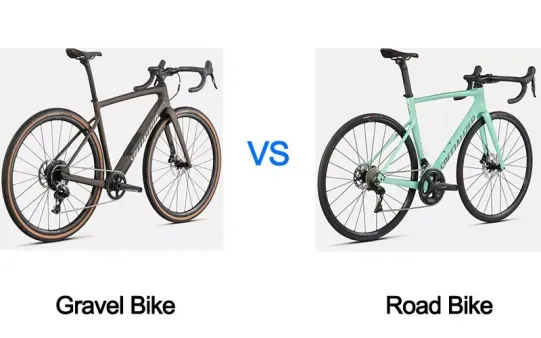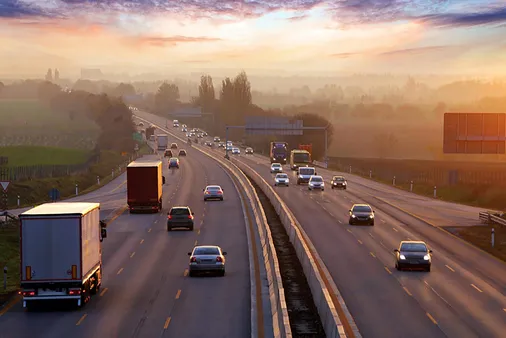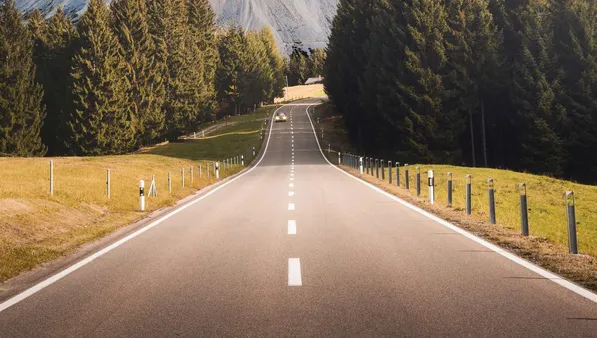Table of Contents
In the realm of transportation, roads and streets form the intricate network that connects communities, enabling seamless travel and commerce. While frequently used interchangeably, these terms harbor distinct differences that shape their design, construction, and purpose. Delve into the world of roads and streets with Kizworld, as we unravel the nuances that set them apart. From bustling city streets to sprawling highways, this comprehensive guide explores the intricacies of road networks, revealing the factors that govern their construction, maintenance, safety measures, and future advancements. Embark on a journey to comprehend the "The difference between road" and immerse yourself in the fascinating world of transportation infrastructure.
The Difference Between Road and Street: Definitions and Examples
I. Road Types and Their Differences
Road Types and Their Differences
When we think of roads, we often envision the paved, two-lane highways that connect cities and towns. However, there is a vast array of road types, each with unique characteristics, purposes, and construction methods.
Major roads, such as interstates and highways, are designed for high-speed travel and typically have multiple lanes in each direction. They are often controlled by access points, meaning that drivers can only enter or exit the road at designated locations.
- Interstate: A limited-access highway that connects major cities and states.
- Highway: A major road that connects towns and cities.
- Freeway: A divided highway with full control of access, meaning that drivers can only enter or exit at designated interchanges.
Secondary roads, such as state highways and county roads, are typically narrower and have lower speed limits than major roads. They often serve as connectors between smaller towns and rural areas.
Type of Road | Purpose | Characteristics |
|---|---|---|
Major Road | High-speed travel | Multiple lanes, divided highways, controlled access |
Secondary Road | Connecting smaller towns and rural areas | Narrower, lower speed limits, less traffic |
Local Road | Providing access to homes and businesses | Narrow, low traffic volume, often residential |
Local roads are the smallest and most numerous type of road. They provide access to homes, businesses, and other destinations within a community. They are typically narrow and have low traffic volume.
Each type of road has its purpose and plays a crucial role in our transportation system. From the major highways that connect cities to the local roads that provide access to our homes and businesses, roads are essential for our daily lives.
Minor Roads vs. Local Roads
Minor roads, also known as neighborhood streets, are typically found in residential areas and connect homes to local roads. They are typically narrow and have low traffic volume.
Local roads, on the other hand, are the smallest and most numerous type of road. They provide access to homes and businesses within a community and are typically narrow and have low traffic volume.
II. Road Construction and Maintenance
Road Construction and Maintenance
Construction Techniques
- Asphalt paving
- Concrete paving
- Chip seal
- Gravel roads
The choice of construction technique depends on factors such as traffic volume, climate, and budget. Asphalt paving is the most common type of road construction, as it is relatively inexpensive and easy to maintain. Concrete paving is more durable than asphalt, but it is also more expensive. Chip seal is a type of road surface that is made by applying a layer of asphalt or tar to a gravel road and then covering it with a layer of crushed stone. Gravel roads are the least expensive type of road to construct, but they are also the least durable.
Maintenance
Roads require regular maintenance to keep them in good condition. This includes activities such as:
- Patching potholes
- Resurfacing the road
- Clearing debris from the road
- Mowing the grass along the road
- Inspecting bridges and culverts
The frequency of maintenance depends on the type of road and the amount of traffic it carries. Roads that carry a lot of traffic require more frequent maintenance than roads that carry less traffic.
Road construction and maintenance are essential for keeping our transportation system running smoothly. By investing in our roads, we can help to ensure that people and goods can move safely and efficiently.
The Benefits of Gymnastics for KidsHow to Improve Your Flexibility and Mobility with Gymnastics
III. Road Safety and Regulations
Road Safety and Regulations
The difference between roads and streets is not just a matter of semantics. Understanding the distinction plays a crucial role in ensuring road safety and maintaining orderly traffic flow. Here's a comprehensive guide to road safety and regulations:
- Speed Limits: Adhering to speed limits is essential for road safety. Posted speed limits are determined based on factors such as traffic volume, pedestrian activity, and road conditions.
- Traffic Signs and Signals: These serve as visual cues to guide drivers and pedestrians. Obeying traffic signs and signals, including stop signs, red lights, and yield signs, helps prevent accidents.
- Road Markings: Road markings, such as lane markers, crosswalks, and pavement markings, are crucial for organizing traffic flow. Following these markings ensures orderly movement of vehicles and pedestrians.
- Pedestrian Safety: Ensuring pedestrian safety is a top priority. Yielding to pedestrians at crosswalks, designated pedestrian zones, and intersections is a legal requirement and a matter of common courtesy.
Country | Pedestrian Deaths per 100,000 Population |
|---|---|
Sweden | 2.1 |
Norway | 2.7 |
United Kingdom | 2.9 |
United States | 6.7 |
India | 17.4 |
Drunk Driving: Driving under the influence of alcohol or drugs poses a significant threat to road safety. Most jurisdictions have strict laws against drunk driving, and penalties can be severe.
- Distracted Driving: Engaging in activities that divert attention from driving, such as using a mobile phone, texting, or eating, is a major cause of accidents. Avoiding distractions is crucial for maintaining focus on the road.
Vehicle Maintenance: Regular vehicle maintenance, including checking tire pressure, fluid levels, and brake function, ensures that vehicles are in safe operating condition.
By adhering to road safety regulations and exercising caution, we can create a safer environment for everyone using our roads and streets. Read our tips for beginner drivers to stay safe on the road.
IV. Road Impact on Environment and Communities
Road Impact on Environment and Communities
- Habitat fragmentation and animal deaths: Roads disrupt wildlife habitats, dividing them into smaller and smaller patches, and leading to increased negative interactions between humans and wildlife. This can include roadkill, vehicle collisions, habitat loss, animal stress, reduced gene flow, and altered ecological interactions.
- Barriers to movement: Roads pose physical barriers to movement for many species, particularly large mammals and amphibians. This phenomenon applies to migration routes, daily movements, and finding food and shelter, and it can lead to population declines and even local extinctions.
- Spread of non-native species: Roads can facilitate the spread of invasive or non-native species by providing them with new areas to colonize. These species may compete with native species for resources, disrupt the ecosystem balance, and reduce local biodiversity.
- Air and water pollution: Road construction and maintenance projects can lead to air and water pollution, including noise pollution. Air pollution is caused by emissions from motor vehicles, road construction equipment, and industrial facilities near roads. Water pollution can occur from stormwater runoff carrying pollutants like oil, chemicals, and sediments into nearby waterways.
- Climate change: Roads also contribute to climate change. The construction and maintenance of roads release greenhouse gases, and the increased number of vehicles on the road leads to higher levels of air pollution, which can further contribute to climate change.
Creating sustainable transportation systems can address many of these negative impacts. This includes investing in public transportation, improving land-use planning, and implementing road safety measures. By working together, we can create a more sustainable and just transportation system that benefits both people and the environment.
Strategies for Improve Mobility and Flexibility with Gymnastics